A little rain, after the hard freeze…a week of warmer weather and some sun…and more plants have burst into bloom or begun to pop buds. Here a rusty blackhaw viburnum’s buds have lengthened and changed color and texture, reaching out for another year’s growth:
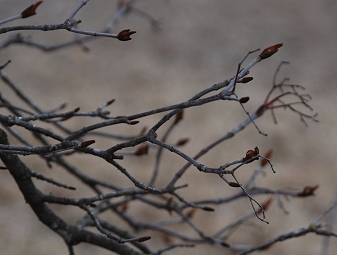 The terminal buds have begun to open, just in time for another hard freeze–but this native can handle changes in the weather.
The terminal buds have begun to open, just in time for another hard freeze–but this native can handle changes in the weather.
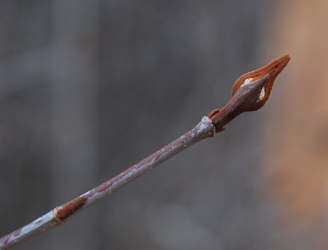
Even earlier to flower is the lemon-scented bush honeysuckle, which began showing a few flowers in December, and is now a delicate spattering of white and pale pink…complete with a small black ant on the uppermost petal.
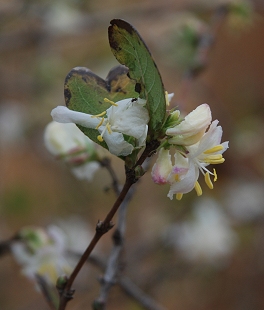
In the near meadow, last year’s nest still hangs in a small cedar elm sapling, only a foot or two above the ground (and would be at about the top of the grass in summer.) Cedar elms, with their scraggly, interlaced lower limbs and twigs, are a common site of low nests on our place.
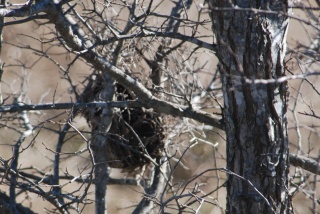
At no time of year are cactus spines more beautiful than in late winter, when the low slanting sun brings out their colors and makes them glow. We have several species of prickly pear; this one has multi-colored spines, always reddish at the base and pale at the tip.
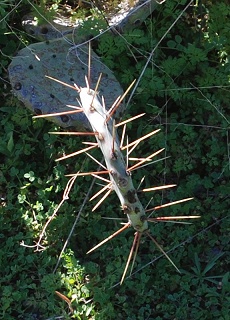
Below it, various winter forbs have now turned brilliant green, making these areas look much lusher than they are–in a dry year, they wouldn’t look like this. A closeup of the spiny pad:
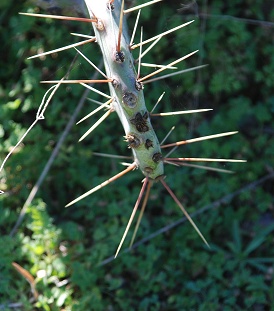
Elbowbush is another early responder to longer daylengths, with no regard for temperature. It’s also a good browse plant for deer, and good cover for small birds (and even the occasional fox, taking a nap under it.) Here the buds are just swollen enough to be noticeable–and these are all for the flower clusters that precede the leaves:
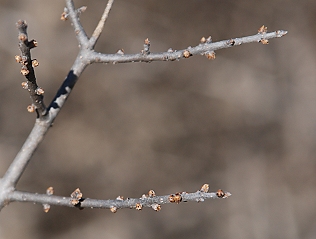
Elbowbush flowers are an early food source for many spring butterflies, moths, flies, and bees. Not all the bushes flower at the same time, so there are several weeks of elbowbush flowers–abundant along the twigs–for use.
A slightly more distant view of stonecrop prior to blooming than I showed here before–and a brighter pink. With the dark green of other small forbs and the rocks, it looks like a miniature landscape.
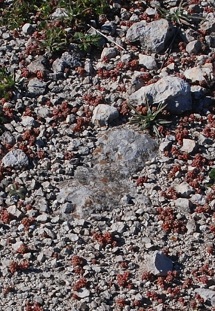
Comment by Laurie Foss — January 28, 2010 @ 5:36 am
Elizabeth, thanks for your blog! I am really enjoying following it.
Laurie Foss
Travis Audubon
Comment by elizabeth — January 28, 2010 @ 6:22 am
Thanks! Glad you enjoy it.
I’m delighted at what’s coming back after the recent drought, though saddened by what we lost (all those new plantings.) Of course, some non-native invasives weren’t quite dead, and rebounded along with the stuff we wanted–Japanese honeysuckle for one. And apparently the cedar waxwings that devour ligustrum and Chinese photinia berries in town have chosen a new corner of the dry woods to “plant” them–lots of little babies in an area where drought took down some already-stressed cedar elms. But the increase in rusty blackhaw viburnum in the creek woods, in spite of everything–yay!